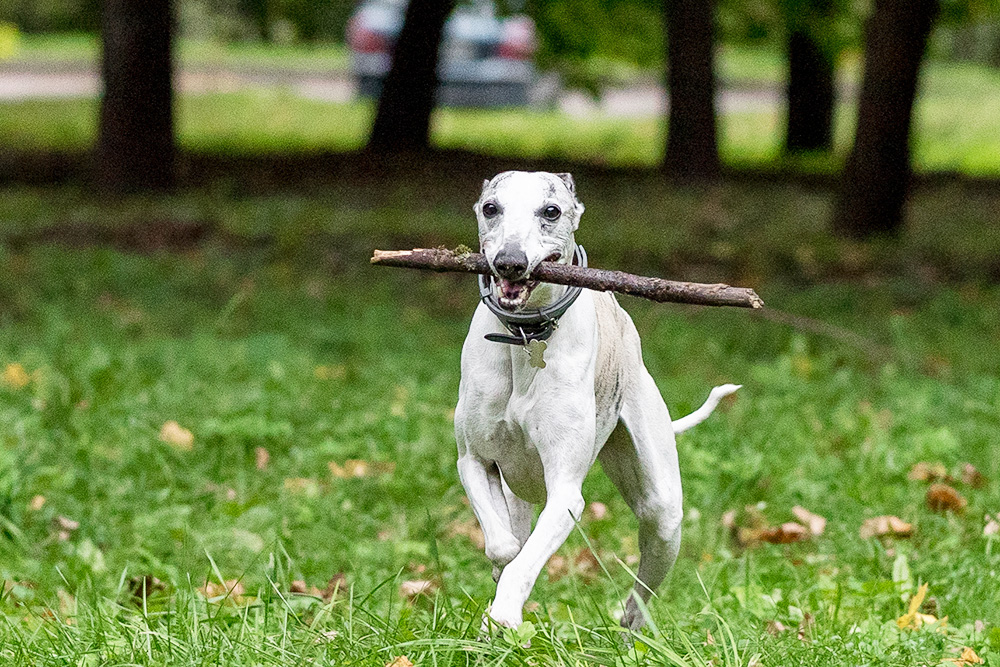Breed Profile – Whippet
12/01/2018
This breed from the hound group is the classic Northern sporting dog. Loyal and affectionate with an amazing turn of speed, the Whippet is a dog you can put your money on.
History of Breed: Small Greyhounds, similar to the Whippet, have been around since the 17th century and can be seen depicted in 18th century art. Bred extensively in the North of England in the 19th century, the modern Whippet’s origins lie in its larger cousin, the Greyhound. Some theories suggest that the Whippet was bred down from small Greyhounds, whilst others suggest the Greyhound was crossed with terriers to derive the smaller-sized breed. In northern mill and mining towns, Whippets were used for coursing rabbits and other small game. Gambling on the outcome was also a popular sport. With Greyhounds being expensive to keep, the Whippet was also a more affordable option. Later, Whippet racing on tracks or alleyways became popular. Racing Whippets is still a common past-time for the breed today, as well as lure coursing, agility and flyball, to which they’re well-suited.
Life Expectancy: Over 12 years.
Size: A small dog, with a height range of 44-51cm and a weight range of 11-18kg.
Features: The Whippet is the perfect combination of muscular power and elegant lines. They are strong at the shoulders and thighs with a deep chest, yet graceful in movement. An arching neck leads to a long, lean, head with tapered muzzle. Nose colour depends on the colour of the coat, which can be any colour. Eyes are oval and quite wide-set, giving an alert, yet sensitive expression. Ears are rose-shaped and fine in texture. The Whippet’s coat is fine and very short without an undercoat. This can make them a good option for allergy sufferers. In cold weather, they need to wear a coat to stay warm.
Energy Levels/Exercise Required: This breed is the fastest dog for its weight and can achieve speeds up to 35mph. This is due to their double suspension gallop in which all four legs are off the ground twice in the stride: once when fully extended and once when fully contracted. As one of the sprinters of the dog world, they have a lot of energy whilst exercising and need opportunities to run free safely. However, once they have had their daily exercise, approximately one hour, they will be content to relax for the rest of the day. An active dog requires a nutritionally balanced diet to maintain good health and give them the energy they need. Gilbertson & Page’s Dr John range includes a variety of formulations that can meet any Whippet’s dietary requirements and caters to sporting and working dogs.
Potential Health Problems: The Whippet is a fairly robust breed with few health issues. They have a large, slow-beating heart and are prone to arrhythmia (irregular heart beat) when at rest. This can be of concern to an owner or vet with no experience of the breed. Interestingly, the heart beat tends to regulate when the dog runs. Cardiac problems can be a potential health issue in the breed. Similarly to Greyhounds, the breed has some unique features, one being its intolerance of barbiturate anaesthetics. It is essential to find a vet with experience of dealing with Whippets or sighthounds.
Temperament: On the whole, this breed is gentle, loyal and affectionate. A somewhat sensitive breed, they require careful training using lots of positive encouragement. Furthermore, they can be wary of strangers.
Child Friendly/Family Dog: The Whippet’s temperament makes it a great family dog. Its natural instinct is to chase small, furry creatures, so a household without other pets is ideal. It does not need lots of room and is happy in a small home. However, due to its desire to sprint, wide open spaces such as fells, parks or beaches nearby are beneficial.
Likes: Sprinting, open spaces, affection, chasing small, furry creatures!
Dislikes: Strangers, rough handling, harsh training.



